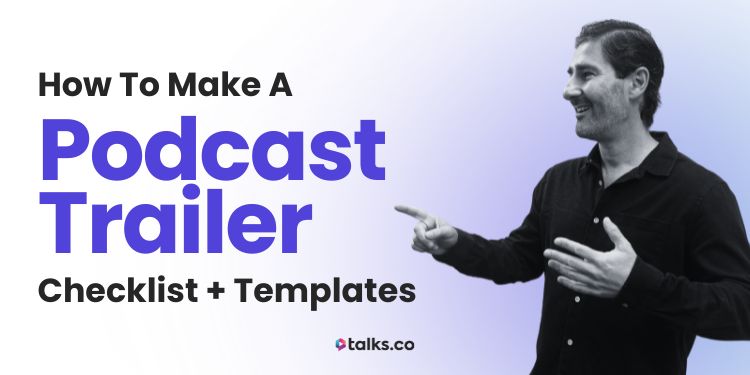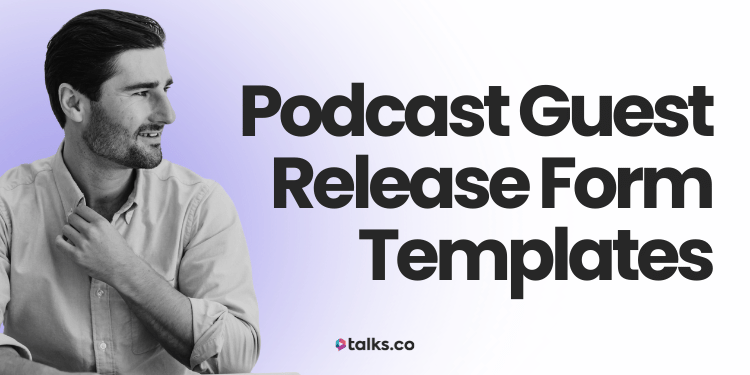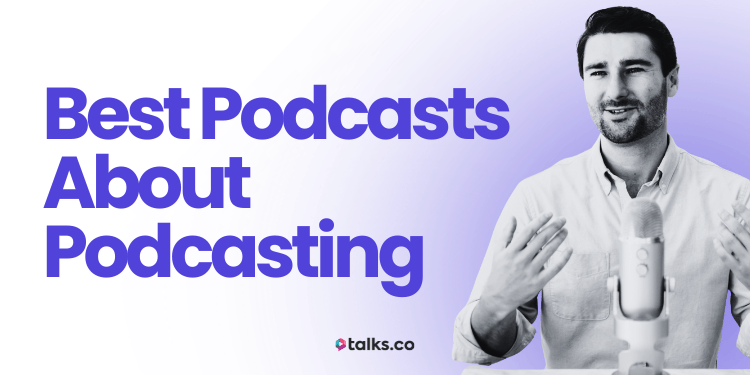Ever scrolled through a podcast app and thought, “Which one of these podcasts is actually worth my time?”
That’s exactly what your future listeners are thinking too. And your podcast trailer? That’s their shortcut to figuring you out fast.
A good trailer grabs attention in seconds. A great one turns a casual scroll into a click.
It’s like the opening kick-off in a soccer match. You don’t need to score straight away, but you do want to show them they’re in for something worth watching.
Whether you’re launching your very first show or reworking an existing one, this guide will walk you through how to create a podcast trailer that feels clear, confident, and true to your voice.
I’ll show you what to include, how long it should be, scripting tips, examples that work, and how to actually record it without overcomplicating the process.
If you’re a coach, consultant, author, speaker, or expert who wants more reach and visibility, this is for you.
A podcast trailer isn’t just a nice-to-have. It’s your first impression.
Let’s make it count.
What Is a Podcast Trailer?
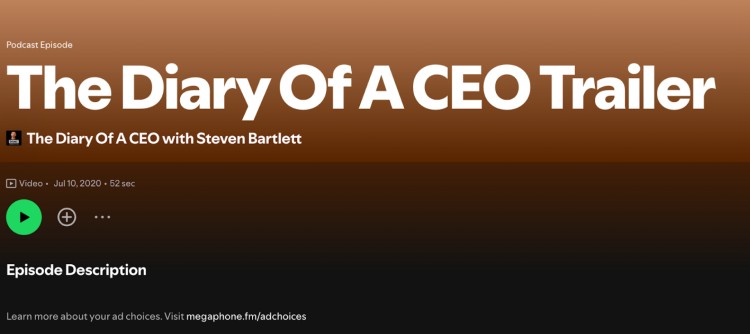
Think of a podcast trailer like a movie preview… but for your show. It’s a short, punchy audio clip (usually 30-90 seconds) that gives potential listeners a quick taste of what your new podcast is all about.
It’s a “coming soon trailer” that introduces the host (that’s you), highlights what potential listeners can expect, and gives them a reason to hit play. Or better yet? Captivate them so much they subscribe.
A good trailer does three things:
- Explains what your show is.
- Tells people who it’s for.
- Hooks them with something that makes them curious to hear more.
Podcast teaser vs podcast trailer
A podcast trailer is a one-time (or occasionally updated) introduction to your show. It’s short, focused, and designed to entice and make a strong first impression.
A podcast teaser is even shorter. A quick snippet or highlight to spark curiosity and excitement about upcoming episodes.
Here’s how to tell them apart:
- Length: Teasers are very brief; trailers are short but more detailed.
- Purpose: Teasers create interest about good podcast topics; trailers introduce your show and what listeners can expect.
- Placement: Teasers often appear as promos or on social media; trailers sit at the top of your podcast feed.
- Calls to Action (CTA): Teasers might tease specific episodes; trailers usually ask listeners to subscribe or follow.
When you make a trailer, think of it as your handshake and elevator pitch. It’s what listeners hear first when they land on your show. Teasers are quick shots to get them excited along the way.
Why your podcast needs a trailer
Sure, you could launch without one. But you’d be missing a huge chance to grab attention right from the start.
Here’s why a trailer is worth adding to your podcast content strategy:
- First impressions count. Podcast platforms like Spotify often autoplay your trailer when someone visits your show page. You want to hook them in those first few seconds.
- Better platform visibility. Some platforms, like Apple Podcasts, require a podcast show trailer if you want to be featured in their top sections.
- Easier to share. You can use a great podcast trailer in your email newsletter, on social media, or in guest pitches. It’s short, snappy, and easy for people to check out.
- Hype builder. If your full episodes aren’t live yet, a podcast trailer gives people a reason to follow your show ahead of launch.
If you’re serious about growing your podcast, start with a trailer. It doesn’t need to be fancy. Just make it clear, confident, and compelling.
A good one can get people listening before you’ve even released episode one.
How to Make a Podcast Trailer (Checklist)
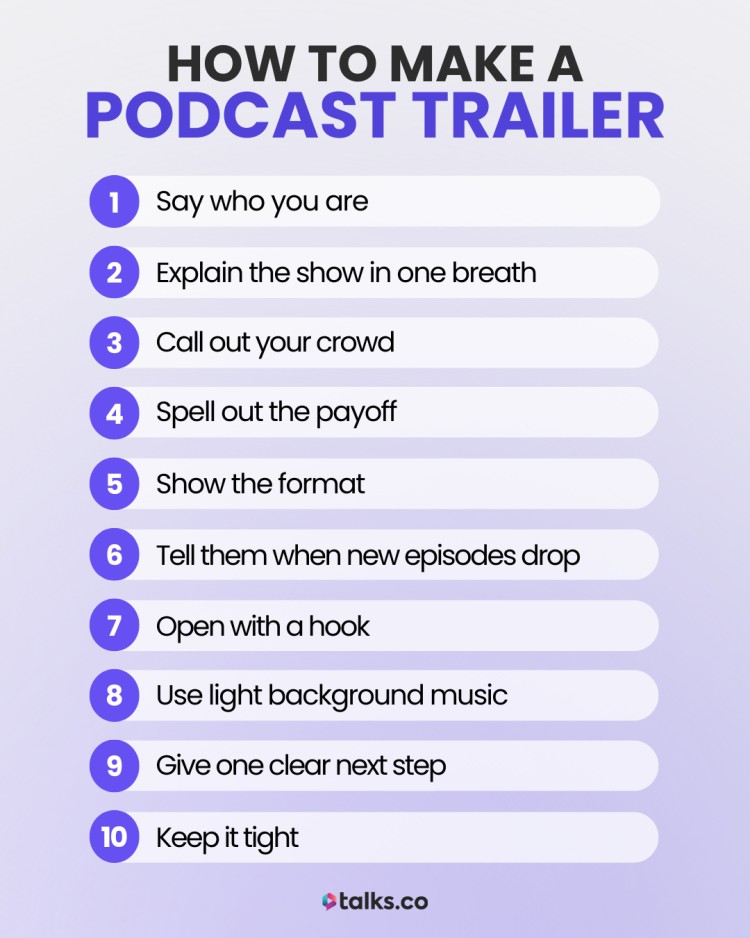
Think of your trailer as the quick warm-up before kick-off. It’s the first thing new listeners hear, so make every second count. Here’s what you want to pack in and how to make your podcast trailer pop:
- Say who you are: One line, nice and clean. “I’m Liam, ex-pro soccer player turned business coach.” Done.
- Explain the show in one breath: “Each week I share bite-size tactics to help coaches pull in more clients.” Simple, clear, and, no detours.
- Call out your crowd: “If you run a coaching business and want steady growth, you’re in the right place.” Let listeners know they’ve found their tribe.
- Spell out the payoff: Tell them what changes when they listen. “By the end of each episode you’ll have one action you can try that day.”
- Show the format: “Short solo lessons on Tuesdays, guest chats on Fridays.” Now they know what’s coming.
- Tell them when new episodes drop: “Fresh episodes land every Tuesday.” Simple and memorable.
- Open with a hook: Start with a bold stat, a quick success story, or a sharp question. Anything that makes ears perk up.
- Use light background music: Pick a track that fits your vibe, keep it low, and fade it out before you speak. The music should lift you, not drown you.
- Give one clear next step: “Hit follow so you don’t miss the first episode.” Make it easy for them to act.
- Keep it tight: Aim for 60-90 seconds. Short enough to finish before the kettle boils, rich enough to leave them curious.
Put these pieces together and you’ve got a trailer that sounds sharp, sets expectations, and gets new listeners smashing that play button.
How long should a podcast trailer be?
Your trailer length should be short enough to hold attention, but long enough to give people a reason to care. When making trailers, think of it like a movie trailer. You want to share just enough to get people curious without giving everything away. That’s what makes a good podcast.
Here’s a quick guide to what effective podcast length works best:
- 30 seconds: Super short and snappy. Great for social clips, quick ads, or grabbing attention fast.
- 45 seconds: Gives you a bit more breathing room to say what the show’s about and who it’s for.
- 60 seconds: A solid go-to. Enough time to share your intro, what to expect, and why someone should follow.
- 90 seconds: Good if you want to include a short clip or sample moment from a type of podcast episode to give it some extra flavour.
Start with the basics, keep it tight, and don’t be afraid to cut it down. Less is usually more when you’re trying to hook new listeners.
Still unsure? Check this out to find out how long a podcast should be.
Podcast Trailer Template
Need a jump-start? Copy, paste, and tweak any of these ten plug-and-play scripts. Each one suits a different show style. Just swap the placeholders for your own details.
1. Solo advice show podcast trailer script
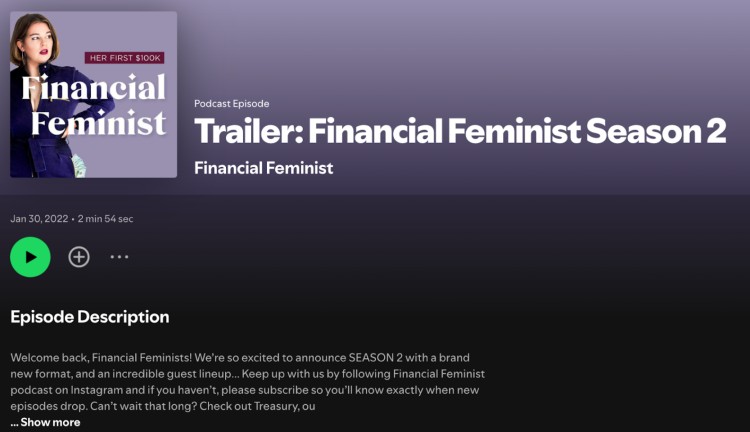
Perfect for coaches, consultants, or solo experts sharing weekly tips or insights.
Template:
“Hi, I’m [Name], host of [Podcast Name]. Every [day of week], I share quick tips to help [target audience] [result they want]. Ready to [benefit]? Follow now and catch the first episode.”
Why it works:
- Quickly builds authority by introducing your role.
- Sets clear expectations (timing, audience, benefit).
- Includes a call to action right away.
2. Co-hosted chat
Great for casual, banter-style shows with two hosts and natural back-and-forth.
Template:
“We’re [Name] and [Name], and this is [Podcast Name]. Twice a week we break down [topic], share real stories, and have a laugh along the way. If [listener goal] sounds good, hit follow and join the conversation.”
Why it works:
- Introduces both hosts so listeners know who’s talking
- Emphasizes tone and personality.
- Makes listeners feel like they’re joining a fun chat.
3. Guest interview series
Ideal for expert-led shows where the value comes from the guests’ insights.
Template:
“Welcome to [Podcast Name]. I’m [Name], and I sit down with top [industry] minds to find out how they [big achievement]. New episodes every [day]. Follow now so you don’t miss our first guest [tease a name or title].”
Why it works:
- Puts the spotlight on your guest lineup.
- Promises specific value for the listener.
- Creates urgency with a teaser.
4. Narrative storytelling

Best for fiction, true crime, personal stories, or investigative audio documentaries.
Template:
“This season on [Podcast Name]: one true story told over [number] episodes. I’m [Name], and I’ll guide you through [brief hook]. Episode one drops [release date]. Follow today and get the full series as it lands.”
Why it works:
- Teases a compelling story arc.
- Builds anticipation with a set release schedule.
- Highlights your role as the narrator/guide.
5. Round-table panel
For multi-voice discussion shows with rotating or fixed guests.
Template:
“Every Friday on [Podcast Name], four voices, [name 1], [name 2], [name 3], and me, [name 4], tackle the week in [topic] from different angles. Want fresh takes with absolutely zero filter? Follow and pull up a chair.”
Why it works:
- Lets listeners know who they’ll be hearing.
- Emphasizes dynamic discussion.
- Sets a relaxed but structured vibe.
6. Daily micro-episode
Perfect for short, snappy shows that offer daily wins or tips.
Template:
“Welcome to [Podcast Name]. I’m [Name], bringing you one actionable idea in under five minutes, every single weekday. Perfect for your coffee break. Tap follow and start your day smarter tomorrow.”
Why it works:
- Leans into the benefit of brevity.
- Matches the format to a daily habit (like coffee).
- Highlights the actionable takeaway.
7. Seasonal deep dive
Great for coaches or educators who like to theme each season with a specific goal or topic.
Template:
“I’m [Name], and this season of [Podcast Name] explores [theme] over eight weekly episodes. Think interviews, field recordings, and practical takeaways. Follow now and binge the whole season as it rolls out.”
Why it works:
- Gives structure and a clear focus to the content.
- Encourages binge-worthy listening.
- Prepares the audience for a limited run.
8. Limited documentary series
Made for one-time investigative or scripted series with a defined endpoint.
Template:
“[Podcast Name] is a five-part audio documentary about [subject]. I’m [Name], and across five episodes you’ll hear voices from [locations or roles]. All episodes drop [date]. Follow to get them in your feed the moment they’re live.”
Why it works:
- Makes the scope clear. Listeners know it’s limited.
- Emphasises original voices and research.
- Creates urgency with the full drop date.
9. Q&A mailbag
For shows that answer audience questions each episode.
Template:
“Got questions about [topic]? I’m [Name], and on [Podcast Name] I answer one listener question every Tuesday. Send yours to [email or site], then follow the show to hear the answers.”
Why it works:
- Puts the listener at the center.
- Builds community and encourages interaction.
- Clearly explains the format and publishing day.
10. Recap and analysis
Perfect for news, pop culture, or business commentary shows.
Template:
“Each Monday on [Podcast Name] I, [Name], break down the biggest stories in [field]. What happened, why it matters, and what to do next. Hit follow so Monday morning starts with clarity, not confusion.”
Why it works:
- Sets a clear, dependable rhythm.
- Taps into curiosity and relevance.
- Promises insight, not just info.
Podcast Trailer Script Examples
Need inspiration? Here are five punchy sample scripts, each with a fun twist you can riff on. Swap the brackets for your own details and record away.
Or if you want a quicker way to kick things off, try any of these podcast introduction scripts and get your trailer script started in seconds.
1. Coffee break fix
Script:
“Hey, I’m [Name]. In the time it takes to finish this coffee, I’ll give you one marketing move that lands new clients. No more gatekeeping. Just a quick win every weekday. Top up your mug, tap follow, and let’s get started.”
Why it stands out:
- Leans on a daily habit everyone knows.
- Promises a single, bite-size takeaway.
- Friendly, time-boxed commitment.
2. Friendly challenge
Script:
“Think you can double your revenue in three months? I’m [Name], and on [Podcast Name] I dare coaches to do just that then show you the play-by-play each week. Up for the challenge? Hit follow and let’s prove it together.”
Why it stands out:
- Hooks listeners with a bold dare.
- Sets clear stakes and timeline.
- Builds community around shared goals.
3. Story hook
Script:
“One year ago, I nearly quit my business after losing my biggest client. Today, bookings are wait-listed six months out. [Podcast Name] is the story of how that flip happened told in ten short episodes, packed with the tactics I used. Episode one drops [date]. Follow now and hear how the comeback started.”
Why it stands out:
- Opens with a relatable low point.
- Teases a full narrative arc.
- Limited-series format invites binge listening.
4. Two-voice teaser
Script:
Host 1: I’m [Name], strategy nerd.
Host 2: And I’m [Name], creative trouble-maker.
“Together on [Podcast Name] we unpack one big marketing myth every Tuesday then give you a fix you can try by Friday. If you like playful debate and real results, follow the show and join the chat.”
Why it stands out:
- Showcases chemistry between co-hosts.
- Clear promise: myth + fix.
- Invites interaction without sounding pushy.
5. Expert cameo
Script:
“[Clip: “The biggest mistake new coaches make? Pricing too low.” – [Guest Name]]
I’m [Host Name], and on [Podcast Name] you’ll hear hard-won lessons like that every week from folks who’ve been there. Short chats, straight answers, zero fluff. Follow now. First episode lands Monday.”
Why it stands out:
- Leads with a bold guest sound bite.
- Sets expectation of high-value voices.
- Reinforces promise in plain language.
Best Podcast Trailer Examples
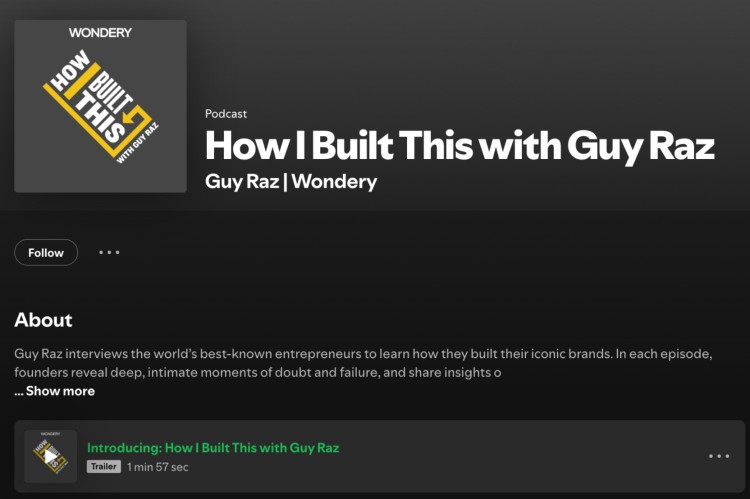
Want to hear a trailer that nails the basics? Start with How I Built This with Guy Raz.
Guy Raz opens with a quick hook: “Hello! This is Guy Raz, and welcome to How I Built This”, then drops a tight montage of founder sound bites, all under 60 seconds. The trailer ends with a clear ask to follow the show.
Podcast trailer music example

A solid music bed can give your trailer a lift right out of the gate. It sets the tone, grabs attention, and gives your voice something to ride on. Doesn’t need to be flashy. It just needs to fit the vibe of your show.
In The Mel Robbins Podcast, Mel kicks off with, “Hey, it’s your friend Mel…” Then some upbeat music rolls in and adds just the right amount of energy. She quickly lays out what the show delivers: real tools, real stories, and real talk to help you get unstuck. The music adds punch without taking over.
Podcast audio trailer example
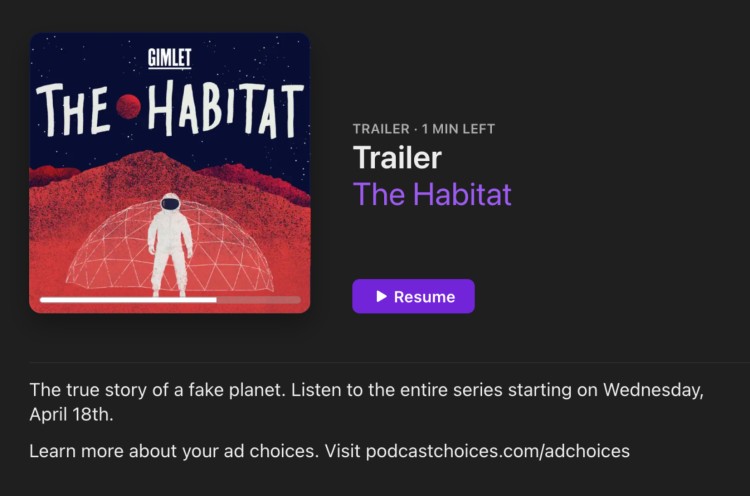
Audio-only trailers can be super immersive. No visuals or podcast sound effects needed. Just great narration, ambient sounds, and a strong concept to pull people in fast.
The Habitat’s podcast trailer is the perfect podcast example of this. The trailer opens with a mysterious voice: “This is the way up.”
Then host Lynn Levy jumps in, painting the scene of a planet that looks like Earth, but turns out to be Mars. From there, she teases the wild setup: six people living on a fake Mars in Hawaii, recording everything themselves. It feels cinematic, quirky, and totally gripping… just with audio.
How to Record a Podcast Trailer
Recording your trailer needs some focus but doesn’t have to be stressful. Here’s a playbook to help you get it done easily:
- Plan your pacing. Decide if you want a calm, steady pace or a more energetic vibe. Recording at the right speed helps set the mood and keeps listeners interested.
- Check your mic placement. Position your mic about 6 to 12 inches from your mouth, slightly off to the side. This cuts down on pops and makes your voice sound clearer.
- Use headphones while recording. Wearing headphones helps catch background noise or audio issues in real time so you can fix them right away.
- Keep water nearby. A dry mouth can mess with your voice. Sip water between takes to stay clear and smooth. That’s a secret podcasting 101 tip.
- Record with consistent volume. Try to speak at a steady volume throughout. Sudden jumps or drops can distract listeners.
- Set your recording levels. Before you start, do a test recording to check levels. Aim for your voice to peak around -6 dB on your recording software to avoid distortion.
- Use simple recording software. Pick an easy program like Audacity, GarageBand, or even your phone’s voice memo app. No need to overcomplicate.
- Save backups. After recording, save your raw files in more than one spot like your computer and a USB drive. You don’t want to lose your work.
- Get feedback. Share your first draft with a trusted friend or colleague. A fresh pair of ears can spot things you might miss.
- Record your outro separately. Finish with a clear call to action recorded in its own take. This way, you can tweak or swap it without redoing the whole trailer.
For that extra confidence, read this to help you really nail your podcast recording.
Your Trailer, Their Hook
A tight podcast trailer isn’t just nice to have. It’s the quickest way to show listeners why your show matters and get them itching to press play.
Now that you’ve got the steps, templates, and real-world examples, all that’s left is to hit record and share it with the world.
Want podcast hosts coming to you instead of chasing them down?
Create your free Talks creator profile today and get your name in front of shows looking for guests right now.
Yes, I Want to Get Featured Without Pitching Right Now
